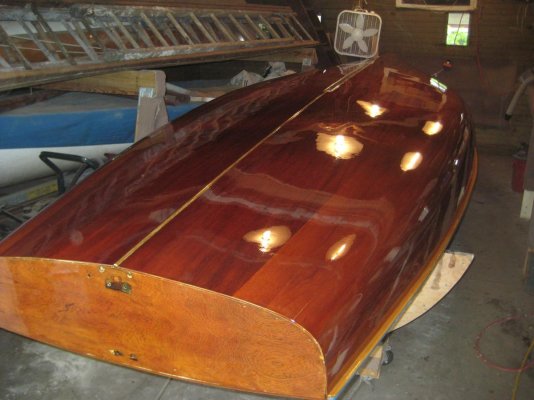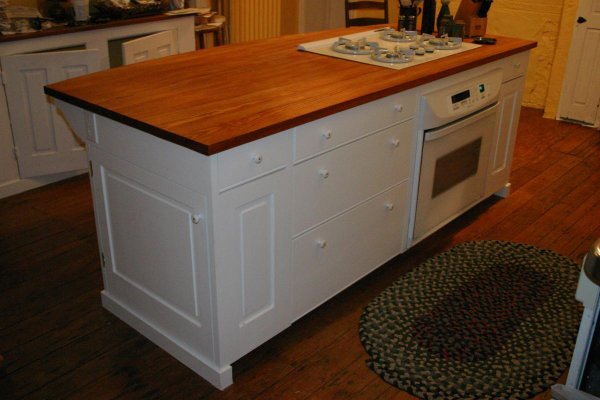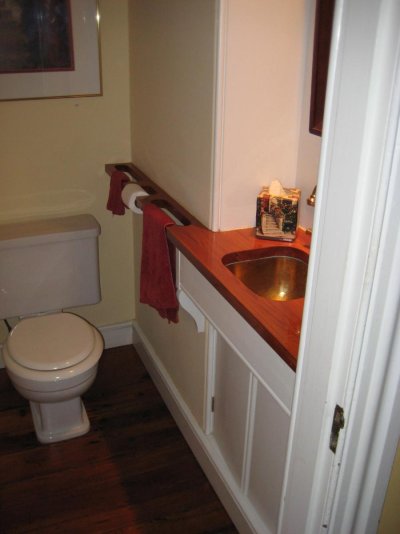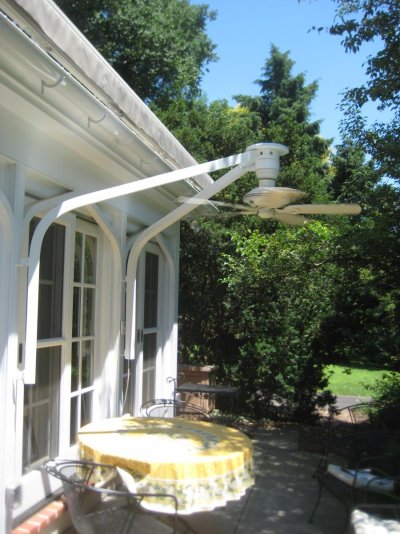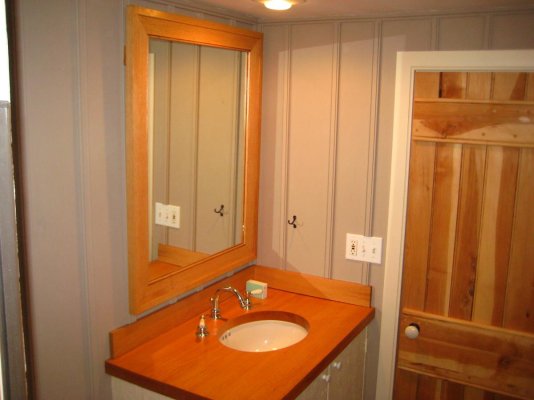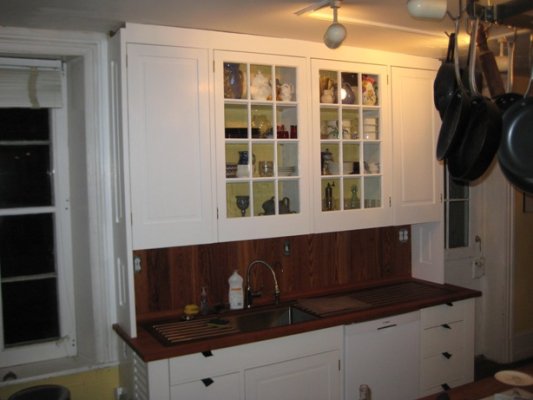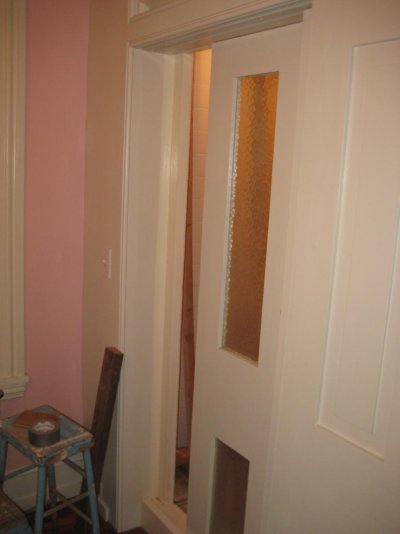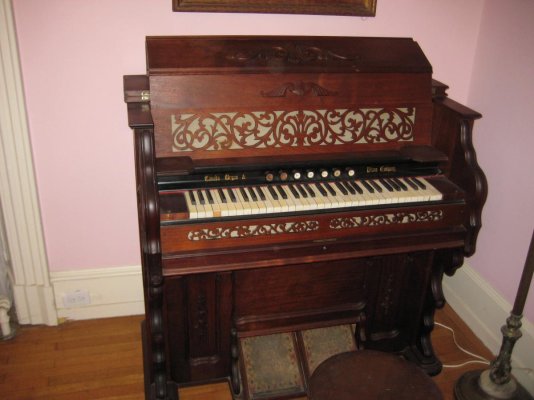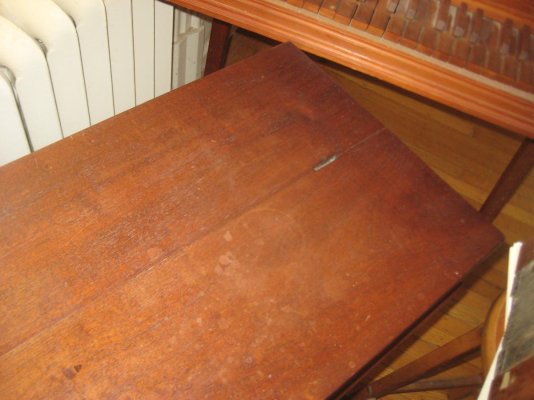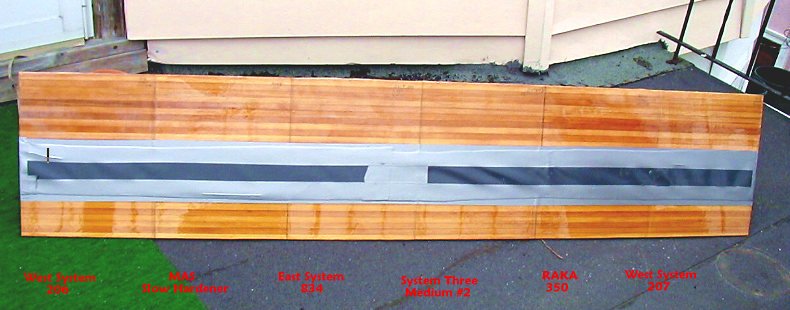Ahhh! I used to swear by this system!
I have done several countertops in wet areas (3-18 years), and a bathroom floor (15 years) using West System and urethanes in the house. I coated the entire Flying Dutchman, inside and out, except for the deck, using West System's special coating and spar varnish (4 years, garaged). I made a wood shower door and frame in Cedar, coated in WS and painted with Brightside Polyurethane; I made the sill for that project in Cedar and 'glassed it using WS and BP (15 years). I made a 'fan crane' for an outdoor ceiling fan which is coated out in WS and painted with latex house paint (1 Year).
The positive is that the wood structure remains dry and stable. The one place where the finish failed was under a leaking coffee pot; the epoxy cracked due to heat and water got into the finish a little before I caught it. The corners are susceptible to dings. The top is still in use.
The negatives are the extra steps to make the epoxy surface perfect w/o runs and drips, and the inevitable repair complication. You have to sand the varnish off, repair the epoxy, and revarnish. On our old Morgan 27, even though I used a 'tiller cosie', sunlight attacked the finish at the corners adjacent to the rudderhead.
I now am a little more discerning about whether I coat out in epoxy. My two later kitchen countertops are Antique Heart Pine and Teak and I use boiled linseed oil to finish. The oil accepts dings and is easily renewed.

